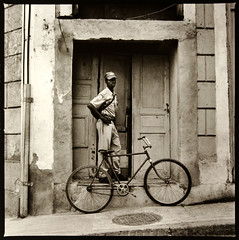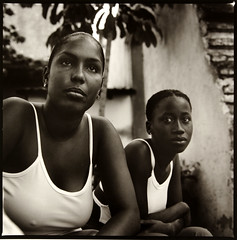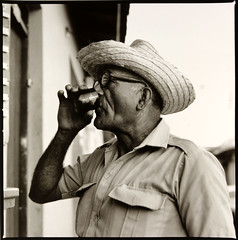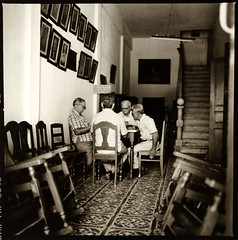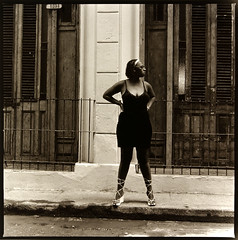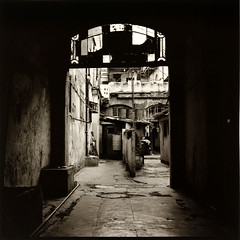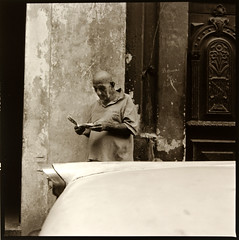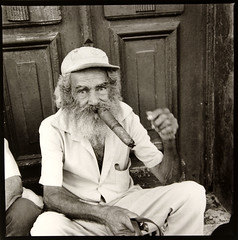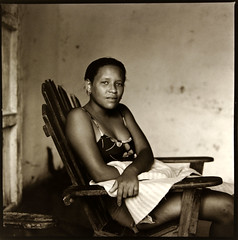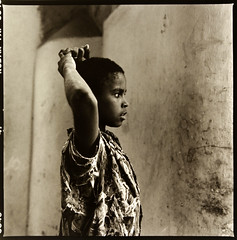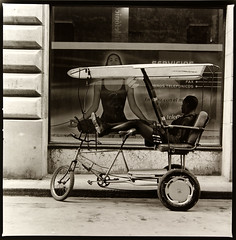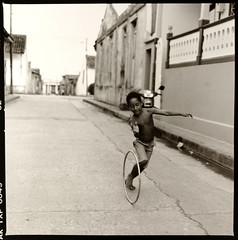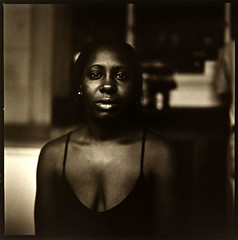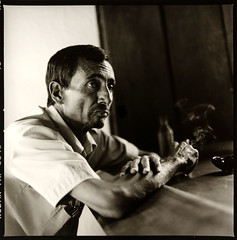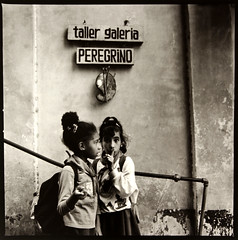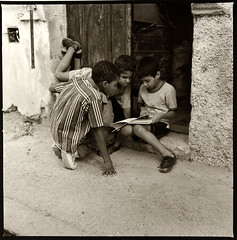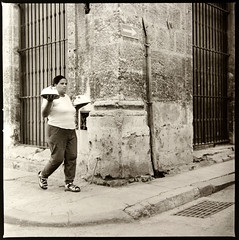Read Ethical Traveler's Reprint Policy.
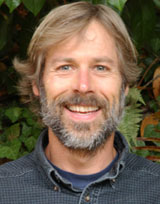
I remember my first impressions of Cuba. We arrived at night and as we entered Havana, I was surprised how dark it was. There were few cars on the road, more bikes and pedestrians. As we drove down the dark streets I could see people leaning in doorways, a bare light bulb here and there. It seemed so different from all the lights and cars of an American night.
As we walked towards the water the first morning the streets were a buzz of activity. Two boys arm in arm each wearing one roller-blade, big crowded buses, American cars from the 50's and little Russian taxis, horse carriages and bicycle rickshaws, the warm tropical air pungent with the smell of tobacco.
We heard live music on a side street, and as we approached we were invited inside a bare stucco room where a 6-piece jazz band was rehearsing for a gig the next day. A woman passing by stopped at the doorway to dance, smiling and gyrating her large round frame.
As we explored Havana on foot we noticed that there was no clear border between the outside world and inside world. Doorways often opened into courtyards, street-level windows opened into living rooms, people flowed in and out of buildings without opening doors. There seemed to be nothing to hide and no materials to protect.
Evidence of the revolution was everywhere. All the large buildings were owned by the government or converted into apartments. The stores where Cubans shopped offered only the basic necessities. Nobody had it easy. We met symphony violinists who earned $20 per month.
Everybody tells you that Cuba is a friendly place, and it's true. The US government's boycott and travel restriction on Cuba is ridiculous not only because it deprives Cubans of basic necessities but it also keeps Americans from experiencing first hand the generous Cuban spirit.


